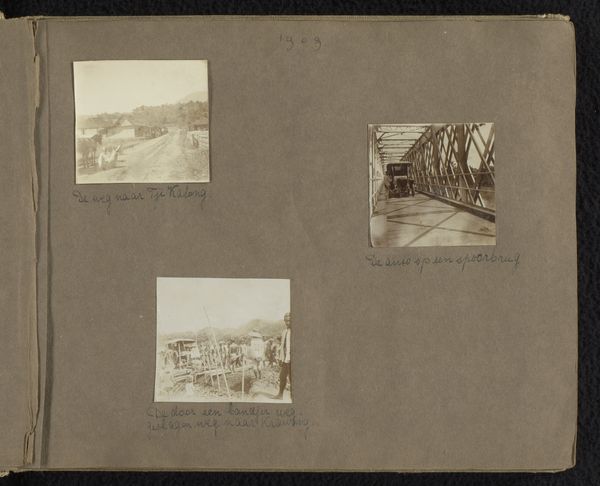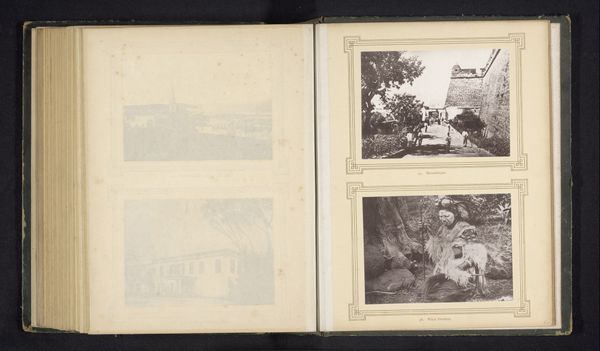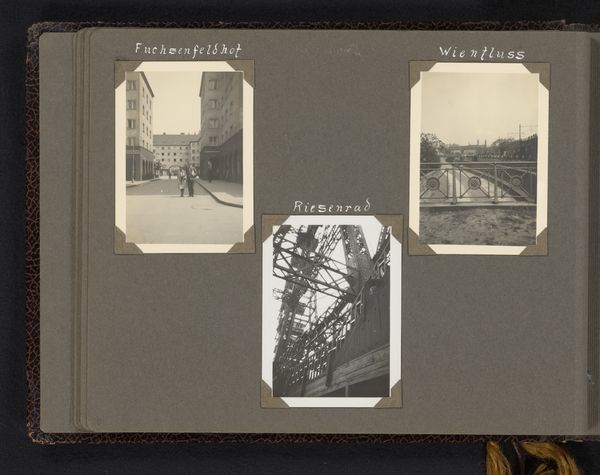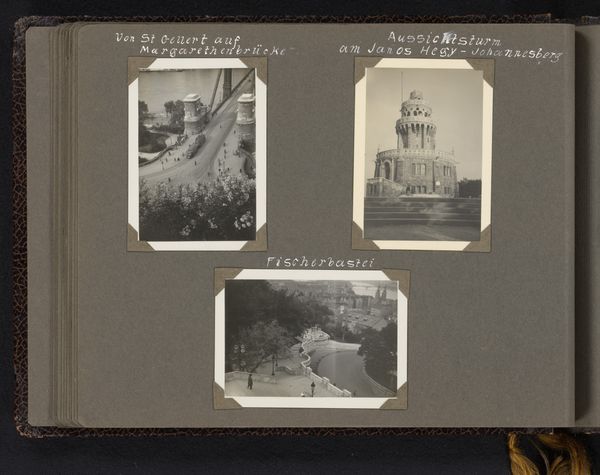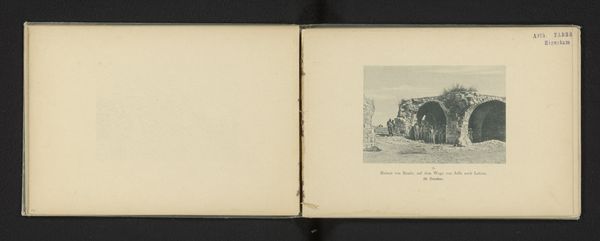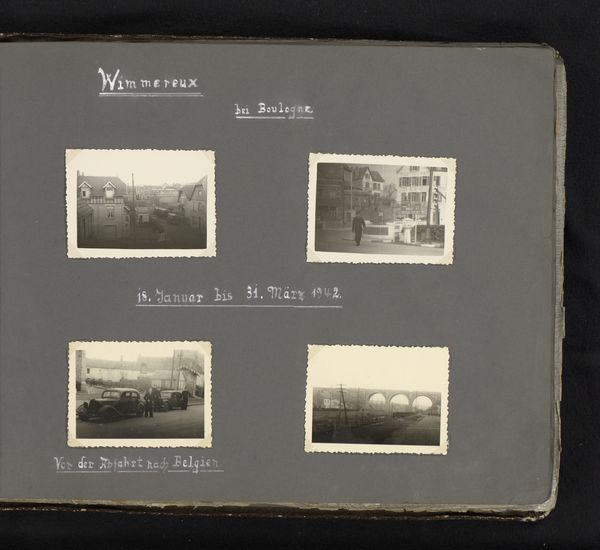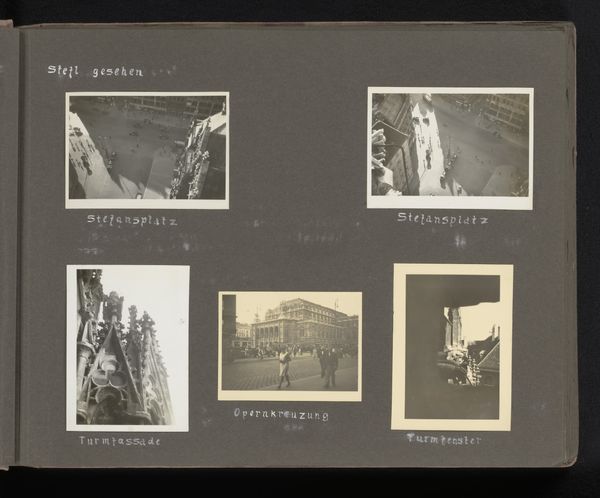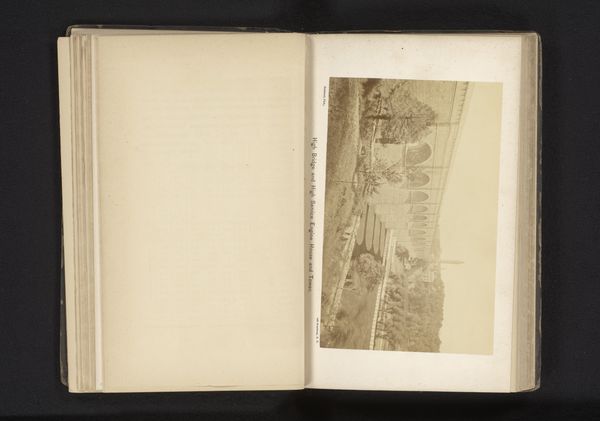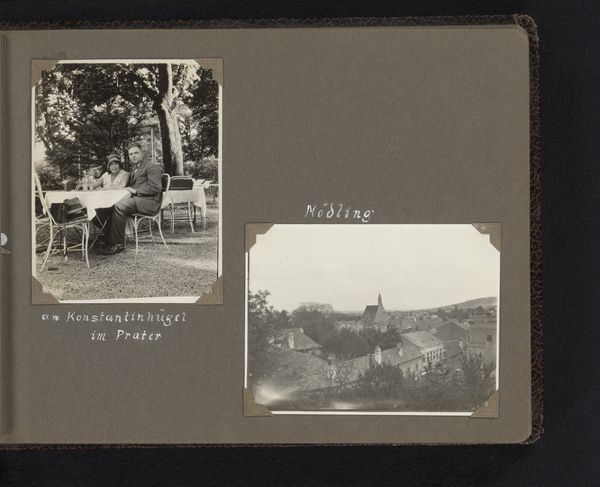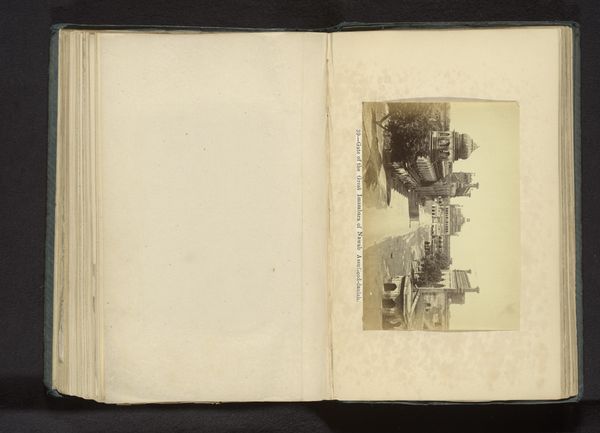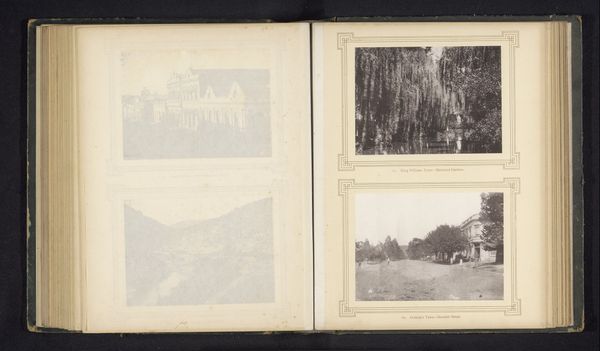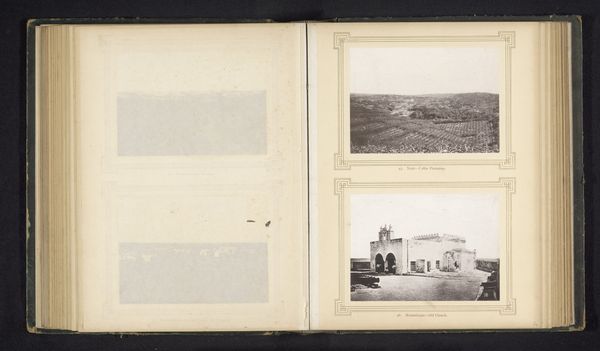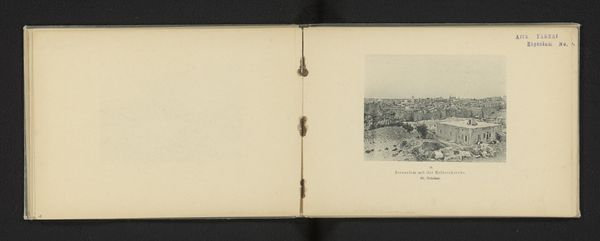
photography, gelatin-silver-print
#
landscape
#
street-photography
#
photography
#
coloured pencil
#
gelatin-silver-print
#
cityscape
#
watercolor
Dimensions: height 190 mm, width 265 mm
Copyright: Rijks Museum: Open Domain
Editor: Here we have Berti Hoppe’s *Verblijf in Budapest*, taken between 1930 and 1931. It’s a gelatin silver print presented as a page in a photo album with snapshots of various scenes around the city. Looking at it, I'm struck by the fragmented sense of place, as if Budapest is being presented through a series of postcards. What stories do you think this piece is trying to tell? Curator: It’s interesting you mention "postcards", as it makes us consider the representation of cities and the gaze of the tourist. Hoppe was based in Germany. How might his outsider status, coupled with the rise of nationalisms in Europe during the interwar period, shape his view? Consider the selection of images: monuments, manicured landscapes. Who gets represented and who is erased in these compositions? Editor: That's a really interesting point about who is represented and who is erased. I hadn’t really considered the socio-political context and its effect. So the choice of subjects like Gellért Hill and Fisherman’s Bastion isn’t necessarily objective, but loaded with a certain perspective? Curator: Precisely. The camera, seemingly objective, is always wielded by someone with their own subjectivities and biases. Think about the politics inherent in showcasing a "beautiful" cityscape while perhaps overlooking the everyday realities of the working class in Budapest at the time. What silences do you notice in these images? Editor: I guess I hadn't considered the power dynamics at play here. Thanks for drawing my attention to those silences! Now, I see how a seemingly simple album page speaks volumes about the era’s dominant ideologies and the power of representation. Curator: Indeed. Seeing the image this way allows us to challenge conventional readings and opens avenues for understanding the layered meanings embedded within seemingly straightforward images. It has certainly reshaped how I approach photography!
Comments
No comments
Be the first to comment and join the conversation on the ultimate creative platform.
